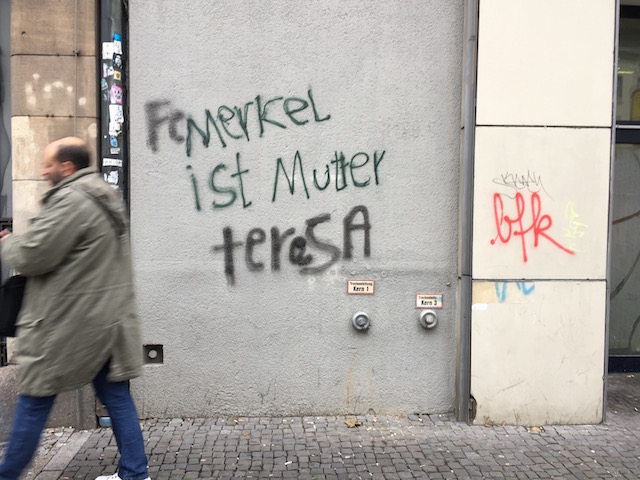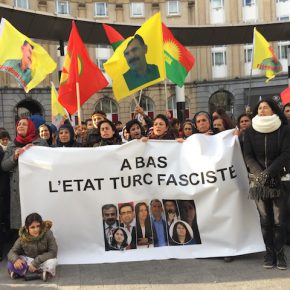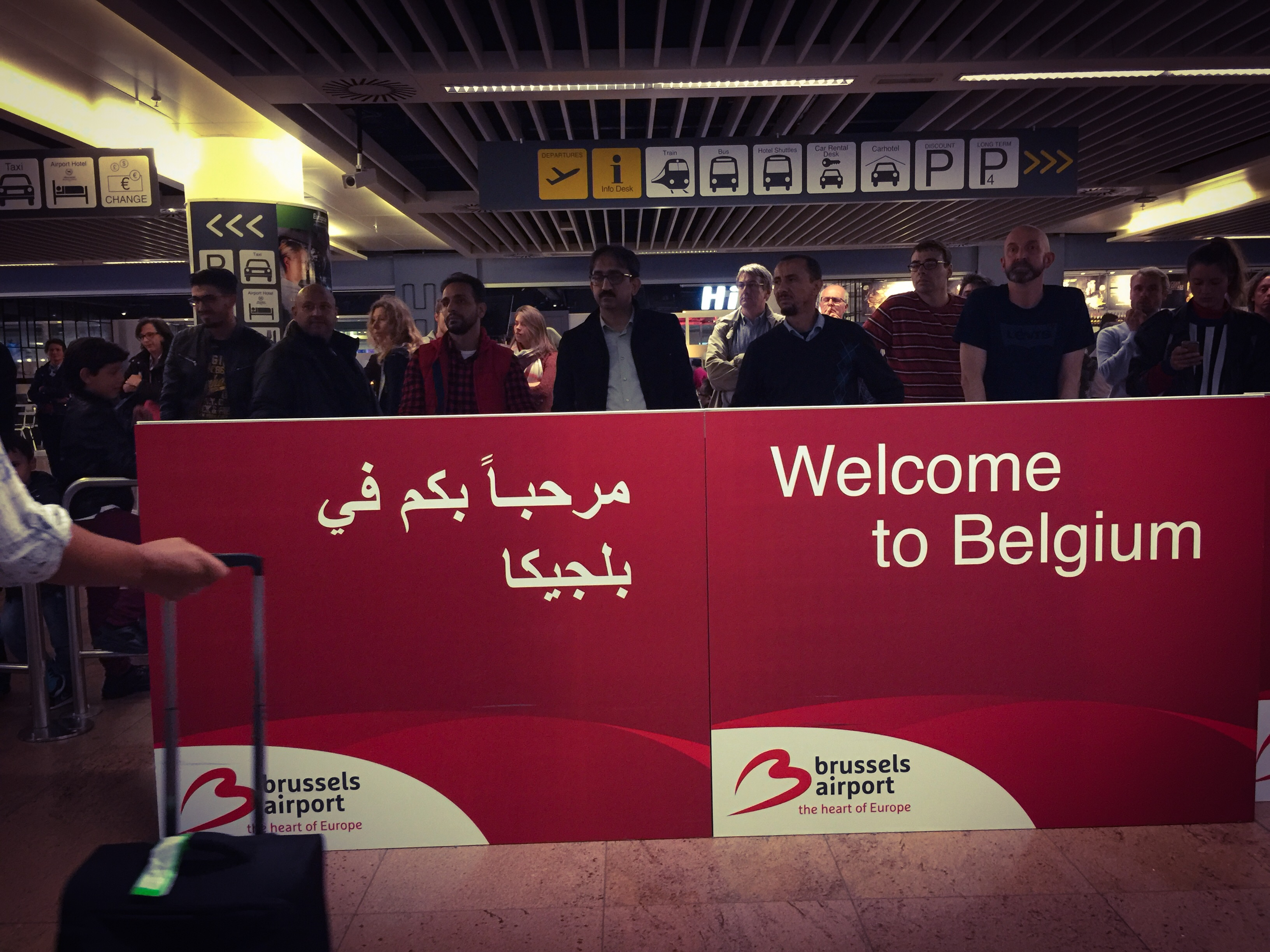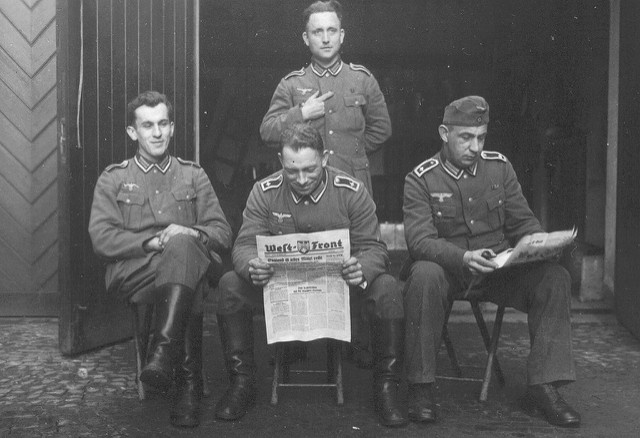The location is excellent. Many of the buildings are nice, albeit historic – meaning survived WWII. And, like the rest of Berlin, rents have largely been low. That is, until about five years ago, when the British and French began moving in.Sandwiched in between the Landwehrkanal, and Tempelhof Airport, the borough of Neukölln is a stereotypically cool neighborhood. Best known for its Turkish and Arab fast food places, it is Berlin’s equivalent to Hackney or Shoreditch, or further afield, San Francisco’s Mission District. But it looks like Brooklyn for the most part.
Few parts of the German capital have been subject to as fierce fights as this area. Chalk it up to the intense poverty that historically flourished here. Ascribe it to the guilt Berliners feel about other neighborhoods like it, which went the way of the ‘Schwabians’ and the digiterati laying claim to the city’s still struggling economy.
Or simply blame it on the fact that former American sector has always been populated by a high percentage of left-wingers. The sort that find themselves attracted to living on streets named after Karl Marx (Karl-Marx-Straße) and inclined to tag department stores with satirical statements about Chancellor Merkel, such as in the lead photo.
The following flyer, found near Tempelhof, is a prime example of the sort of activist literature typical of the Neukölln left. Posted all over the area this fall, it has an especially learned quality to it, harkening back to the era when street lit served the same function as blogs and Facebook pages. Indeed, there’s a lot to learn from.
Indeed, as the translation attests, there’s a lot to learn from.

Our ‘hood is changing. The years of development policy promoted for years by the high-ups in Berlin has been reflected in rising rents, luxury renovations, countless apartments and lots of rich New Berliners, and Neukölln has not been spared. Quite the contrary.
The kebab shops close and the boutiques open!
The politicians and their tame media try to sell this transition as a natural change. And indeed, the populations of every big city are fighting against the same thing, whether it be New York, London or Paris. Nevertheless, these changes are neither accidental nor natural. There are always few who benefit from it: the big shots who earn a fortune compared to blue-collar workers. Contrary to what the politicians say, local communities do not benefit from the mass opening of cafes, boutiques and malls, the reality is quite different. For the original inhabitants of these neighbourhoods, the changes are a direct attack on their living conditions!
In no other part of Berlin have rents risen so much over the last nine years as here. On average, a flat now costs 75% more than it did in 2007.
As a result many Neuköllners have to move out, mostly to the suburbs.
And an above average number of newcomers from other regions are moving in.
Nordneukölln is also a leader in terms of apartment density. In Reuterkiez, there are almost 500 holiday homes and apartments in the space of just a few streets! To many of the young people from around the world, the rent seems low to them. Then they see “the real Neukölln”: a multi-coloured party façade, behind which the actual population is being displaced and thrown out of their homes.
Braunschweigerstraße in Richard-Kiez is a prime example of how an area in which there was housing and even affordable rent just a few years ago has been purposefully changed. Investors and homeowners have sent rental and property prices skyrocketing, as well as a number of big shots and hipsters that can afford the expensive homes and are guilty of actively contributing to the development through the opening of bars, cafes and shops.
Now, instead of youth centres and other sport and leisure activities in the quarter, or affordable food shops, rows and rows of bars and cafes where one can barely afford a cup of coffee or a beer are open. Old pubs and shops, which have been meeting points for the neighbourhood’s residents, have had to shut and the ALDI on Richardstraße was the only cheap option for people on lower income.
Since 2013, there has been a gated community at Braunschweiger Straße 41, right in the middle of our neighbourhood, where it is more and more difficult to pay the monthly rent, and these new condos cost €2,500 per sqm. These gated fortresses seem more like strongholds for their high income residents, who insulate themselves from the neighbourhood. The occupants and the builders know how things are in the quarter, but the interests of the locals mean shit all to them when they are building their beautiful new homes here.
On Schudomastraße, off Esperantoplatz, as well, 14 new condos are going to be built; all have been sold already. They were marketed as being in a “sought after downtown location”, “highly equipped” and with “underfloor heating”.
Fuck their “popular downtown location”. This is our neighbourhood and we will not sit silently by while they kick us out, with our friends and families, just to make space for the rich.
Neukölln, defend yourself! Our home is not some glamorous location!
Hipsters, big shots and investors, fuck off from our ‘hood!
Rebellion is justified!
Translated from the German by Samuel Morgan. Photographs courtesy of Joel Schalit.





